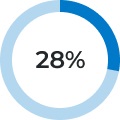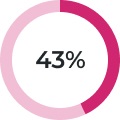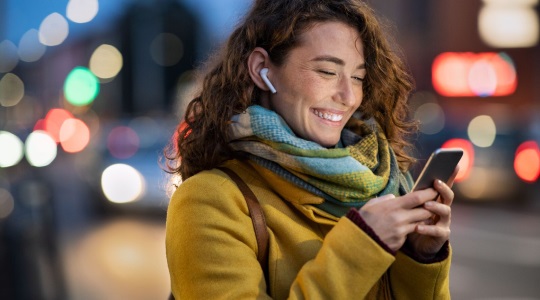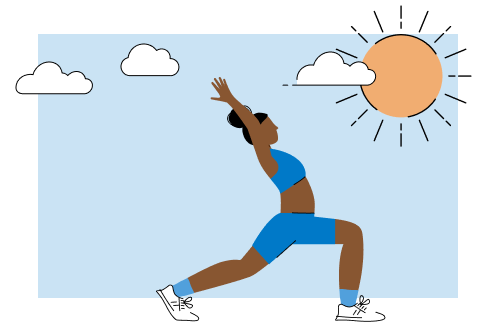The UK’s most sunbed addicted cities
Find out the truth about skin cancer and sunbeds, from our expert, Dr Tim Woodman.
Your health expert: Dr Tim Woodman, Medical Director for Cancer Services, Bupa UK Insurance
Publish date 14 November 2024.
Next review 14 November 2025.
Dr Tim Woodman explores the usage of sunbeds across UK cities, the truth about skin cancer and gives life-saving advice to the UK cities where sunbeds and tanning products are still in favour.
How does your city rank?
Our research has found significant changes to the way the nation uses sunbeds.
UK cities with the most sunbed searches in 2024:
- 1. Belfast
- 2. Leeds
- 3. Plymouth
- 4. Liverpool
- 5. Newcastle
- 6. Hull
- 7. Bradford
- 8. Manchester
- 9. Sheffield
- 10. Glasgow
- 11. Coventry
- 12. Bristol
- 13. Stoke
- 14. Leicester
- 15. London
- 16. Birmingham
- 17. Southampton
- 18. Cardiff
- 19. Edinburgh
- 20. Nottingham
Sunbed research findings
Northern fans
90 per cent of the nation’s top sunbed searches are based in the north of the UK, with Belfast leading. Liverpool and Manchester’s sunbed searches have increased more than any other city.
Cities on the rise
Plymouth, Newcastle and Liverpool’s sunbed searches are higher than they’ve been in the last three years.
Not just for summer
In previous years, spring and summer were the most popular seasons to use sunbeds. Now, users search for them more consistently, all-year round.
Research by Melanoma Focus found 28 per cent of UK adults use sunbeds.
43 per cent of younger Brits use sunbeds. .
Why are more people searching for sunbeds?
Dr Tim Woodman says,
"Those in the public eye often sport a bronzed look all-year round, helping to set a tan as a fashionable beauty standard . Being tanned is sometimes seen as a symbol of looking healthy’, or wealthy. With increased exposure to social platforms, many younger people may feel pressured to follow trends, regardless of how fair their skin may naturally be.
Northern Britain isn’t famed for its sunshine. For those with naturally paler skin, sunbeds and tan enhancers may seem appealing, but they’re very dangerous. If you want that tanned look, fake tan is the way to go.
Tanning, either outside or on a sunbed, actually means that your skin is damaged. This risk of damage can become deadly at any time and increases by 75 per cent in first-time sunbed users under the age of 35."
How bad are sunbeds?
Sunbeds are really bad for your health. Many people incorrectly think that using a sunbed is safer than getting a tan from direct sunlight, but that’s not true. Sunbeds use ultraviolet (UV) rays the sun also produces these, so sunbeds are just as risky. UV rays are the third biggest cause of cancer in the UK and can lead to the deadliest form of skin cancer melanoma.
Using a sunbed will always increase your risk of developing skin cancer, but the risk is higher in some people. For example, if you:
Are fair skinned
Have skin that burns quickly
Have freckles or many moles
Have lighter coloured eyes or hair
Have a family history of sunburn or skin cancer
What you need to know about quick tanning
Google search volume data from July 2023 to June 2024 shows searches concerning online content recommending ways to enhance your tan, whilst using sunbeds have soared. In particular, the data shows:
Mega tan nasal spray
13 times more searches.
Sunbed accelerator with bronzer
Four times as many searches
Strong nasal tanners
Four times as many searches.
Best tan gummies
Twice as many searches.
Our research highlights lots of products marketed to use with sunbeds that claim to speed up the tanning process. Examples include:
Tanning nasal sprays
Tanning injections
Sunbed creams
Tanning pills
Accelerators
Tanning gummies
You may see promises that the chemicals within these products increase melanin production, to help you tan quicker. However, none of these products are recommended by health professionals or regulated. Tanning nasal sprays and injections are illegal in the UK.
Whether they’re used on their own, when sunbathing, or using a sunbed, applying or consuming unregulated products is not safe. As these products haven’t been around for long, nobody knows their long-term effects. It’s not safe to use any of these products, not even once.
Nasal tanning sprays are known to be linked to a range of side effects and conditions, including an upset tummy, nausea and vomiting, muscle wearing, painful erections and increased sensitivity to the sun.
Using sunbeds in winter
Our research revealed that sunbed search habits have changed seasonally in recent years. Up until spring 2022, it was common for sunbed searches to rise in the warmer months and fall in the colder months. Now, searches are far more consistent throughout the year.
This worrying trend suggests that there’s a growing number of Britons wanting to use sunbeds all-year round. As well as tanning being glamourised by those in the public eye, we found many social media accounts sharing harmful advice’ to encourage sunbed use in the colder months.
Our research found social media accounts spreading sunbed misinformation, specifically to using sunbeds during winter.
Sunbed health misinformation spread by social media:
Sunbeds help to boost your mood and increase vitamin D production
Vitamin D is gained naturally by sun exposure in the summer months. This vitamin can help contribute towards better mood, reducing the risk of anxiety and depression.
In the darker months, the UK’s sun levels are too low to get your recommended daily allowance of vitamin D, but going on a sunbed isn’t ever the solution to this.
From October to March, everyone in the UK should take a 10microgram vitamin D supplement to keep their mental wellbeing, bones, muscles and teeth well.
If you still don’t feel like yourself after taking supplements for a while, speak to a health professionalas it could be a sign of deeper rooted mental health problems, like seasonal affective disorder (SAD).
Sunbeds improve your sleep
Whilst it’s true that exposure to sunlight helps your body produce hormones that help regulate your sleep cycle, it’s never advisable to use a sunbed if you’re struggling to sleep.
There are lots of reasons you might be struggling to sleep, including stress, illness or changes in your life.
From October to March, everyone in the UK should take a 10microgram vitamin D supplement to keep their mental wellbeing, bones, muscles and teeth well.
Sleep self-help tips may help you to manage your activities, how you’re feeling and how well you can sleep.
Sunbeds boost your immune system
Here’s another example of sunbed use being mistaken with the benefits of vitamin D.
Our research found false information claiming sunbeds can even reduce the number of colds you catch.
Vitamin D is important to help maintain a healthy immune system, but using a sunbed isn’t the way to achieve a boost.
In fact, UV radiation from sunbeds can actually suppress your immune system and lead to health problems.
How to safely use sunbeds
Ultimately, there aren’t any safe ways to use sunbeds. If you like the tanned look, using a fake bottled version is the way to go.
A tan from sunbeds or the direct sun is a sign that your skin is damaged. UV radiation damages your skin cells, making you look older, and puts you at higher risk of developing skin cancer.
Get to know what’s normal for your skin and always make sure to protect it, especially if you’ve used sunbeds or have been sunburned in the past.
How do I keep my skin looking young?
Wear suncream
You should protect your skin from sun damage, all-year-round.
Your face is likely to have the most exposure to sunlight, so wearing suncream everyday - with a sun protection factor (SPF) of at least 30, with UVA/UVB protection and a five-star rating helps reduce the chance of harm.
You should always apply suncream to any areas of your body that are exposed to the sun, and reapply regularly.
Check your moles
Changes to the way your moles or skin feels and looks can sometimes be a symptom of skin cancer.
You should always get yourself checked by a health professional if a mole changes size or shape, or if you develop a new one.
Additionally, you should book an appointment with a health professional if you have a patch of red skin that doesn’t heal after four weeks, or if you spot any sores, lumps or ulcers that have a scaly, pink, red or white texture.







